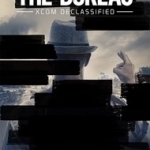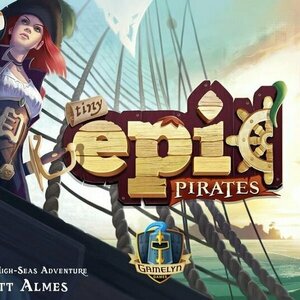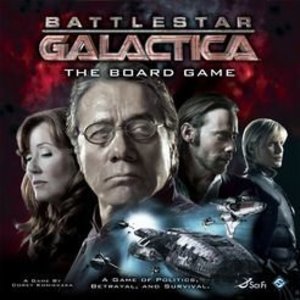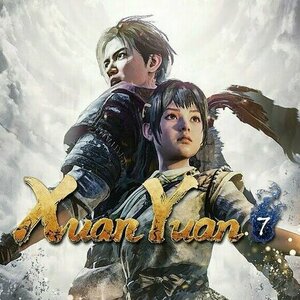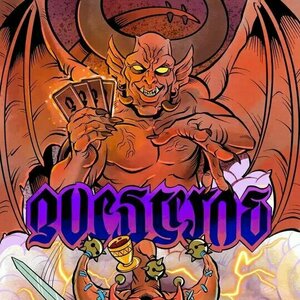Gareth von Kallenbach (980 KP) rated the PC version of The Bureau: XCOM Declassified in Video Games
Jun 19, 2019
As a fan of the first two games in the series which were icons of the 386 and 486 CPU age, I had been horrified about how badly the series had eroded with subsequent released which moved away from the turned based strategy play in favor of all things, flight simulations and run and gun shooters.
When I heard that 2K was taking over the franchise I was excited but to be honest the first look I had at the game during the 2012 E3 Expo had me wondering if I would ever see a return of the classic game series as the new version seemed to be more of a tactical team based game.
Many fans shared this concern and others and XCom: Enemy Unknown appeased many of the fans concerns by giving fans the updated turn based game that they had hoped for.
The Bureau is set in 1962 and is a nice mix of noire meets the X-Files as it explains the early days of the XCom organization in a solid prequel to the events of the subsequent games.
In 1962 Agent William Carter is tasked with delivering a case to his superiors. Ambushed en route and left for dead, Carter awakens to an alien assault and must battle for his life as he attempts to escape the carnage around him.
Armed with his pistol and in time a rifle, Carter meets up with other survivors and is able to escape and soon finds himself recruited in the new and secret organization known as XCom. The new organization is tasked with stopping the alien threat by any means necessary and despite Carter’s past difficulties, his superior Faulke, is convinced that he is the right man for the job.
Carter is able to command three man teams and prior to each mission selects which agents as well as their equipment will accompany him on his missions. Players will also be able to assign power ups along the way and assign them to various agents. The new abilities are vast and range from calling in support drones and air strikes to levitation, cloaking, and numerous other abilities and attacks based on alien technology.
As with prior XCom games players will have the option to select several side missions or they can focus on the main missions to propel the story, Interacting with other characters not only fills in the story but allows players to get a bigger picture thanks to the dialogue options which allows Carter to ask as many or as few questions as he wants.
In combat, Carter and his team work in a third person perspective and travel through towns, countryside, and other locales to meet the alien threat head on. In combat, players can enter a tactical mode to give move and combat commands to other members of their team as well as provide reviving and healing when needed.
Enemies can be tricky but with proper strategy and some well placed shots or grenades they can be taken down. There is a nice variety of enemies and they get harder as the game moves forward. Players can obtain alien weapons at a later state in the game and being able to use energy weapons is a nice touch as is the ability to wander your base in between missions.
The game does offer some branching storylines as actions taken or not taken will give players one of the games various endings.
I enjoyed the graphics and sound of the game as being able to take cover behind a vintage car and then unleash a barrage on a swarm of enemies from a 60s restaurant or radio station was great fun. I also liked seeing various nods to the classic XCom throughout.
While at times it did play as linear I was happy that there was not as much micro-management as I feared there would be and the game is a lot of fun to play. The enemies did seem to become a bit repetitive as the game went along as while the early missions had some challenge, some of the later ones can be frustratingly difficult.
The voice acting in the game is solid and the banter would be worthy for any classic science fiction or hardcore detective film or novel of the time.
I wish that the game offered a multiplay option as being able to co-op missions would have been great fun but for what it is, the game is a satisfying experience.
In the end, it will not be a classic along the lines of the original but it is a very worthy entry into the series and well worth your time to play especially if you’re a fan of the series.
http://sknr.net/2013/10/03/the-bureau-xcom-declassified/
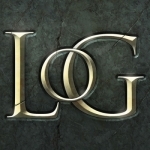
Legend of Grimrock
Games
App
With over 1 million copies of the series sold on PC, the ultimate dungeon crawling RPG is now...
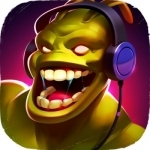
Beat da Beat
Games
App
Game producer Nekki, creator of hits like Shadow Fight 2 and Vector, presents you Beat Da Beat - a...
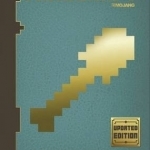
Minecraft Construction Handbook - Updated Edition: An Official Minecraft Book from Mojang
Book
Minecraft is a multi-platform block-based gaming sensation available on Xbox, PlayStation, PC and...
Purple Phoenix Games (2266 KP) rated Tiny Epic Pirates in Tabletop Games
Dec 28, 2021
Disclaimer: I do not intend to rehash the entire rulebook in this review, but rather provide a general overview of the rules and gameplay. -L
Tiny Epic Pirates is a competitive game in which players take on the roles of pirate captains sailing the seas, engaging in combat, trading at various ports, and trying to bury some treasure. Played over a series of rounds, the game ends once a player has buried their 3rd treasure chest. To setup, follow the instructions as detailed in the rulebook – there are simply too many to outline here concisely. Two unique aspects of setup are that the Map cards are shuffled and randomly placed in a 4×4 grid, ensuring a variable setup for each game. The other is that each player will also randomly assign Order tokens on their Wheel (rondel), which means that no two players will have the same setup for a game. Once the Sea has been created, players have prepared their appropriate mats, a market for Booty and Crew have been setup, and tokens/Ships are placed on the map, the game is ready to begin!
Each turn is broken down into 5 steps: Captain’s Order/Deckhands, Sail, Execute Captain’s Order, Trigger Bonus Actions, and Crossing the Ship Line. The first part of every turn is to move your Captain meeple clockwise on your Wheel to select your Captain’s Order for this turn. Moving to the next adjacent space is free, but to skip spaces you must place Deckhand meeples onto the skipped spaces. In future turns, you may have Deckhands coming off the wheel, and you will assign those to other tasks during this step. The next step is to Sail your ship. Every player begins the game with a base speed of 1 Map card, and this can be enhanced throughout gameplay. During this step, you may Sail your ship across Map tiles up to your total allowed distance. After having Sailed, it is time to Execute Captain’s Order. To do this, refer back to your Wheel to see which action your Captain is on, and perform it. Possible actions are to Plunder (steal Booty from settlements), Trade (trade Booty for $ at markets), Crew Up (add up to 4 Crew members to your Ship), Search (gain a one-time benefit from un-searched Map cards), Attack (attack opposing Pirates or Merchant ships at sea), or Hide Out (rest at a Cove and reassign all Deckhands). You may only perform the action that was selected in the Captain’s Order step, regardless of if your placement on a Map card has other actions available.
Once your selected action has been performed, the next step is to Trigger Bonus Actions. Looking at your Captain and Crew cards, if their leftmost icon matches your current Captain’s Order, you may trigger the listed bonus actions. Some bonus actions allow you to perform duplicate Captain’s Orders, but others will earn you money, let you reassign Deckhands, exchange Booty at a different rate, and bury treasure. You don’t need to perform every Bonus Action listed if you so choose, but they may only be performed when their card icon matches your Captain’s Order. The very last step of your turn is to see if you have Crossed the Ship Line. Check your Wheel and see if you have moved from space 5 across the Ship Line to start another circle around the Wheel. If you did not cross the line, then your turn ends and play moves to the next Pirate. If you did cross the Ship Line, then the Merchant and Navy ships will sail a set amount of distance. Merchant ships are simply trying to deliver goods to port, and will be traversing the sea throughout the game. The Navy ship is hunting down Pirates, and will move to attack the current player any time the Ship Line is crossed. When a player has buried their third and final treasure, the round finishes as normal and the game ends. The player who buried all 3 treasures is the winner! In the case of a tie, check the rulebook. 😉
As with most of the Tiny Epic games, I will first start by saying that the size of the box may be small, but the gameplay inside is enormous. There is so much strategy in this one, I think it’s the ‘heaviest’ one in the series so far. You have so many different choices when it comes to strategy, and the gameplay will feel different every time. You could choose to take the offensive and be the aggressor, attacking any and all Ships that you can. Winning combat against Merchant Ships earns you Booty and other resources, while winning combat against opposing Pirates earns you Legend Levels. Your current Legend Level dictates how many spaces you are allowed to Sail, as well as how many dice you can roll during combat. So increasing that level results in better benefits. Maybe you just want to be an honest Pirate and do all of your trading at legal markets, avoiding contact with others and trying to skirt around combat. Maybe you want to try a little of both? The point is, you have choices, and must be able to adapt them based on your opponents’ decisions as well.
A neat element I touched on earlier about this game is the variable setup for each individual player and their Wheel. This really factors into your strategy because you have to know when to use which actions. Do you use a Deckhand to skip a space, or do you burn a turn moving for free to keep that Deckhand right where you want him? And remember, Bonus Actions are only triggered when the matching Captain’s Order is selected, so maybe you have to sacrifice acting in a turn (not being able to perform the selected Captain’s Order) in order to trigger your desired Bonus Action. It’s all about strategy, and that keeps the gameplay engaging at all times.
Just a word of warning though, there is a bit of a learning curve, as there are so many steps and items to consider each turn. Thus the gameplay felt pretty daunting and slow-going my first few plays. But as I became more comfortable with the turn structure and the iconography, it became easier to know what comes next. Another thing to consider is player count. Playing Tiny Epic Pirates at 2 players didn’t really feel that immersive or engaging. With only 2 players on a 4×4 grid, it can be easy to completely avoid each other and skirt around, essentially playing by yourself in a way. With 3 and 4 players, there are more Ships on the map and more opportunities for player interactions and engagement. So it all comes down to what kind of gameplay you want, when selecting your player count.
Components. Again, so far all the Tiny Epic games have had awesome production quality and Tiny Epic Pirates is no exception. The artwork is bright and colorful, the cards and cardboard tokens are sturdy, the meeples are cute, and the actual ships are fun to play with. My only qualms are that two of the player colors – black and blue – are visually similar so in setup it can be tricky to tell them apart. Another qualm is that two of the Booty types (teehee) are a tan and gray color, and the iconography for both on the Map cards are similarly colored. The first few plays I found myself trading the wrong Booty at market because I didn’t check the icon closely enough. These are not game-breakers by any means, but just a heads up so you’re paying attention! As this was a Kickstarter, I did opt for the add-on Pirate Skull dice, and have to honestly say that I prefer the regular game dice better. The ‘knots’ on the corners of the skull dice stop them from continuing to roll, so I felt like I wasn’t really getting a real roll on them. Maybe that’s just my personal opinion, but the regular ol’ game dice are perfectly fine.
How does Tiny Epic Pirates fare in the lineup of the Tiny Epic games? Fairly well, I would say. It’s not one that I would pull out to play with just anybody, as it is a bit of a heavier game, but it is one that I know I would enjoy with my game group. There are a lot of neat elements and mechanics at play here that really work well together and make for an engaging and kind of brain-burning (in a way) game. Although Tiny Epic Pirates might not get as much playtime for me as others in the series, it’s a good one to have and it really embodies the tiny (small box, check) and epic (sweet and strategic gameplay) parts of the title. Purple Phoenix Games gives this one a seaworthy 4 / 6.

Brothers in Arms® 3: Sons of War
Games
App
Join the heroic MULTIPLAYER shooting action of World War 2! *IMPORTANT* Brothers In Arms® 3: Sons...
Purple Phoenix Games (2266 KP) rated Battlestar Galactica: The Board Game in Tabletop Games
Feb 23, 2021
Disclaimer: There are several expansions for Battlestar Galactica. This review will not take any expansions into account, and will focus solely on the base game. Also, I do not intend to rehash the entire rulebook in this review, but rather provide an overview of the gameplay. – L
To setup for a game, follow the instructions in the rulebook – there are simply too many to detail here. Each player selects a Character, and receives the corresponding Character sheet and tokens. Based on the Characters selected, one player will receive the President title and another the Admiral title. Depending on how many players there are, a Loyalty deck is created and each player is secretly dealt a Loyalty card – either “You are not a Cylon” or “You Are a Cylon.” The Loyalty cards determine how you will play the game: human players win if they complete their given objective, and Cylon players win if they prevent the humans from completing their objective (by depleting resources, successfully invading the Galactica, or destroying the Galactica itself). The game is now ready to begin!
Battlestar Galactica is played over a series of rounds in which players take turns moving, performing actions, playing/drawing cards, etc. until either the human players or Cylon players have won the game. A player’s turn consists of 4 main steps, carried out in the following order: Receive Skills, Movement, Action, and Crisis. To begin your turn, you will draw Skill cards according to the skills listed on your Character sheet. Skill cards can be used to address crises or can provide special abilities. In the next step, Movement, you may move your Character to a different location/ship (all provide special actions). After moving, you will then choose one Action to perform – either listed on your current location, Character sheet, by using a Skill card, or you may choose to perform no action at all. Once you have completed your action, draw the top card of the Crisis deck, and resolve it. Depending on the Crisis card drawn, you may need to then Activate Cylon Ships or Prepare for Jump (more on this in a bit). If neither of those are listed on the Crisis card, then your turn ends and play moves to the next player.
I know that seems like a lot, but each turn of Battlestar Galactica can essentially be broken down into 2 phases: Player Actions and Space Combat. The first phase, Player Actions, is what is detailed above – drawing Skills, Movement, Actions, and drawing Crisis cards. This phase is where players make progress towards their objectives. Certain Actions or Skill cards earn specific rewards necessary to move forward in the game. Crisis cards can consist of Cylon attacks (activating and adding new Cylon ships to the board), Skill checks (all players secretly contribute Skill cards to either aid or sabotage the Skill check), or Events (resolved immediately). The second phase of play, Space Combat, takes place after the Crisis card has been drawn on each turn. Certain Crisis cards will show icons of Cylon ships, indicating that they are to be activated for combat, launched into play, or moved around the Galactica. Cylon ships will act based upon an action hierarchy, detailed in the rulebook. If the drawn Crisis card has the “Prepare for Jump” icon, move the fleet token forward on the Jump Preparation track, jumping the fleet if necessary (and moving the humans closer to their game-end objective). I have purposefully left out some elements of play, for you to discover on your own, or because they just provide intricate detail for the steps and actions described above. When the game-end objective is met by either the human players or the Cylons, the game is over and that respective race wins the game!
To say that there is a lot going on in Battlestar Galactica is quite an understatement. There are several rules and game elements that I did not touch upon, just because if I did then this review would be too long. With so many elements in play and of which to keep track, this game is not exactly for the faint of heart. The gameplay is very involved and requires a good amount of strategy – this is definitely a game that could take up most of a game night to play. That being said, I love this game. There is a lot going on, but that just provides players with so many different strategies to complete their objectives. Maybe you want to focus on dealing with Skill checks or Crisis cards, but maybe you’d rather think offensively and be prepared for any potential Space Combat. Can you help the crew efficiently manage its resources, or position its fleet to protect the Galactica itself? Your strategy must be adaptable at a moment’s notice to help you complete your objective….whatever it may be.
Speaking of which, the fact that there may or may not be secret Cylon players attempting to disrupt your plans really takes a hidden identity game to the next level. Cylons want to sabotage the humans, but in subtle ways as to not be found out – because once a Cylon is revealed, the humans can target and hinder their turns. Can you convince the humans that your previous actions were honest mistakes, or will they catch on that you are trying to undermine their efforts? The elements of deception and bluffing in this regard make the game much more immersive and make it feel realistic – there is a traitor among us and we have to find them, while also completing our own objectives. You really start to question who to trust and how your own actions can be perceived by your fellow players. There have been times, when playing this game, that we have taken breaks for dinner or snacks, and all players pocketed their cards rather than leave them on the table, vulnerable to sneaky opponents. Battlestar Galactica is definitely engaging for all players, and for such an involved and lengthy game, that is something to be applauded.
Let’s touch on components for a minute. The production quality of this game is great. The cardboard elements, including resource dials, are thick and sturdy. The cards and Character sheets are quality, colorful, and feel good in hand. And the plastic ships are well made too. The artwork consists mainly of screen caps from the TV show (which I admittedly have not yet seen…) but the theme and cohesiveness of the components makes for an immersive and engaging game overall.
In general, I am not a person who enjoys hidden identity games – simply because I am a bad liar and get found out almost immediately. However, the way this mechanic is incorporated into Battlestar Galactica makes it more a game of strategy than simple deception. And games of strategy are what I truly love. Managing your hand of Skill cards to best overcome Crisis cards, thinking tactically about how to deploy your fleet and battle Cylon ships, and having to determine who among the crew can actually be trusted keeps all players engaged across the board. Nobody can just sit back and relax, every single turn can drastically affect the outcome of the game. Everyone is in it, and that is what I love about this game. Purple Phoenix Games gives it a 11 / 12. This game has been out of print for a while now, but if you ever get a chance to play – jump on it! You don’t have to know the show to enjoy the game. Trust me, I haven’t seen a single episode yet.
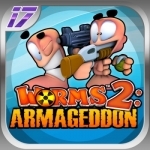
Worms 2: Armageddon
Games and Entertainment
App
#1 Turn-Based Game in 135 countries - #1 Strategy Game in 100+ countries #1 Game overall 35+...
Charlie Cobra Reviews (1840 KP) rated the Xbox One version of Xuan Yuan Sword 7 in Video Games
Oct 4, 2021
It seemed like it was going to be an open world game but wound up being very linear in nature although it had aspects of an open world game like side quests, fast travel, and even treasure chests scattered throughout the game world as well. There's a climbing mechanic that seemed kind of pointless because it was pretty much just a cut scene of in game graphics of you climbing a little cliff or sometimes it would turn into an interactive part where you had to move the analog stick to move the character. Still it was better than these weird times that the game gave you control of the character for a scene in which your only movement was preset like a ride on a rail that couldn't veer off a road.
I liked that it was an action-RPG meaning instead of turn based combat like most RPG's it had an active combat system where you could move at your own leisure and consisted of hack and slash combat with some martial art skills, blocking, dodging, and some riposte (parrying). There are four basic martial art skills which can be learned as you progress through the game, Bull, Wolf, Bear, and Tiger. They become stronger and increase the length or hits of their combo the more you use them. A big draw back is that you could only equip or use two at one time although they can be changed at anytime through the talent menu. Then there are three special martial art skills which are Taowu, Tundou and ?
The combat was one of the things that had me really conflicted. A cool thing I liked about the combat was that there was a meter that would go up when you would attack an enemy and if it filled all the way you could perform an execution on them. Otherwise it was very unresponsive most of the time making dodging and parrying really hard and kind of useless. I found the blocking especially useless because of how much damage you still incurred. There is a skill tree for new martial arts and you can create and upgrade structures in Elysium that can enhance various things, such as weapon, armor, accessories and more. You can also use the fusion to capture the souls of enemies in combat and fuse them together in Elysium to equip them for bonus stats and effects.
Your able to carry items in your inventory which are mainly objects like items that don't do anything except advance the story or quest and some like healing weapons. There is an equipment screen for weapons and accessories but you only stay with one weapon the whole game. It does change and become stronger and its appearance changes too. You can even change outfits. I'm not sure if you get any in the game as the version I played came with a couple of additional weapons/costumes. You do wind up getting some party members which is customary of some RPG's and they help out by attacking enemies on their own. You can control them by activating some abilities or special attacks that have cooldown times for when you can use them again. There's a minigame called Zhuolu chess and it can be pretty fun and a nice change of pace but not what you were looking for when you bought the game.
You can save your game and recover health at random campfires throughout the game world as well as listen to some party dialogue when you choose to rest. The dialogue tends to repeat often and doesn't really advance the story much or fit where you are at in the story that often. These game mechanics are similar to Dark Souls as resting respawns enemies when you save at a bonfire and get healed too. As I mentioned earlier the game employs a fast travel system consisting of waypoints called guard stones that you can activate when found. There is an element of puzzle solving in the game but they don't seem to be that hard to figure out and some can even be skipped if you don't want to bother with it.
The graphics were pretty solid and the game surely looks good for the most part. The textures are sometimes rough in the environment and sometimes there's very noticeable instances of "pop-ins" but overall aesthetic and style is beautiful. You really never get to play games where you get to see ancient Chinese castles, cities, or kingdoms so that was nice. The leaves in the trees are even ruffled by the wind, which is a nice touch. The main characters like Zhao and his sister Xiang look great and so do most of the secondary characters like Chu-Hong and Mo Huang. It just makes it that more disappointing when you see sub-par detail in the NPC's and stiff cutscenes because you know they could have done better on those too. Maybe they didn't have enough time, man power or budget.
The music was probably one of the best additions to the game as a whole. Containing traditional Chinese sounds and instruments befitting the setting the music was great. There are some instances where there is no music and the void is filled with nothing but awkward silence or the sound of footsteps. Only the subpar voice acting fills the dead air and background music would have added more depth to certain parts and scenes of the game. There's no English dubbing for the voice acting in the game it's only in Mandarin/Chinese which isn't bad in itself except the performances are kind of hit and miss and not very balanced.
Verdict: [5/10]
The game seemed very rough around the edges, it lacked that "polished" feel that it would have gotten if it had been a "AAA" game instead of a "AA" game. It's linear aspects left little to no deviation for exploring the world other than the main quest making it feel like going through a tunnel from location to the next. The distances between the towns and villages also made the world feel really small which it probably was. The story and gameplay were enjoyable enough but writing and especially acting/voice acting in key cutscenes needed work. The combat was was so uninspired I felt like I was doing the same sword attacks the whole game and they never really changed. And last thing, even if it doesn't help or is in any way useful, I like to be able to make my character jump and this game didn't let you do that either. So in conclusion I have to give Xuan Yuan Sword 7 a 5/10. It's an average or ok game, which has it's moments but nothing to write home about. However if they make a Xuan Yuan Sword 8, I'd be looking forward to see what kind of improvements they would make in the next installment.
Purple Phoenix Games (2266 KP) rated Questeros in Tabletop Games
Jan 21, 2021
Ero is the goblin court jester from the open who has been “chosen” to quest about the land to rid it of the ne’er-do-wells of the realm. In this solo adventure mode of Questeros the player will be donning the visage and character of Ero as they travel about developing their skills and having encounters with powerful beings. It is up to the player to guide Ero through the kingdom and rid it of the foul that is plaguing it.
DISCLAIMER: We were provided a prototype copy of this game for the purposes of this review. These are preview copy components, and I do not know for sure if the final components will be any different from these shown. Also, it is not my intention to detail every rule in the game, as there are just too many. You are invited to download the rulebook, back the game through the Kickstarter campaign, or through any retailers stocking it after fulfillment. -T
To setup the solo game, fondly and ingeniously-named “Ero’s Quest,” follow the rulebook to divide the tarot cards into their specific stacks and splays so that it roughly imitates the photo below. Draw a hand of five cards from the deck and the game may begin.
On a turn the player has a choice of seven actions that may be performed in any order. Each action may only be performed once per turn and when the turn is over the final action is Rest. To use the Develop action the player will place a card from their hand onto the Blades, Staves, or Orbs stacks in next-numerical order. This increases Ero’s attack and spending power. To Puchase cards Ero will spend Orb cards to look at the spent Orb value worth of cards from the draw deck, add one to their hand, and place the others at the bottom of the draw deck. At times Ero will need to Forget cards from hand in order to make room for more cards to enter it via the Learn action. Forgetting simply discards cards from hand while learning draws cards into hand from the draw deck. Recover is used to stand any kneeling/turned/rotated cards into an unused state by destroying cards of higher value from hand. As stated previously, to Rest is to end the turn by discarding the top card of the draw deck to setup the next turn.
I purposely left out the final action choice, Encounter, for a specific reason. Ero’s Quest is won when the entire deck of 21 Encounter cards is defeated. Each of these cards depicts a person or persons that Ero meets in his travels. Some require Ero to give them cards in order to pass. Some require Ero to succeed in battle against them in order to progress. In either case, Ero will need to get through the entire deck before his draw deck runs out in order to win the game.
Battle in Ero’s Quest is turn-based, where the Encounter persona attacks first, thus handing Ero wounds immediately. Wounds are suffered by spending Cups cards in value of the wound taken. For example, the Assassin is a value of 12, so they immediately wound Ero for 12 damage at the start of the encounter. Ero will spend a value of 12 Cups cards to simulate damage taken. Ero may then attack with a combination of available Blades, Staves, and any Ally cards obtained – one of each per attack turn. If the Encounter is defeated, Ero lives on. If the Encounter is not yet defeated, the battle continues with the Encounter card dealing damage and Ero responding with damage until one is defeated.
As mentioned earlier, the Encounter deck contains 21 cards with six of these being combat encounters. Ero has a ton of work to do and when each turn requires a card to be discarded before a new round may begin, they also have an in-game clock ticking and ticking each turn. However, if Ero is able to Develop their skills and overcome all the Encounters, the game is won and Ero becomes a Hero.
Components. Again, this is a prototype copy of the game, and many items are not fully completed in this version. That said, what we were provided is a large stack of tarot-sized cards, a first player Ero token (for multiplayer games), and a large pad of scoring sheets (also for multiplayer use). The cards are great quality and feature some really excellent artwork (on the cards that have the completed artwork on them). I do like the art style employed here, as I am a fan of fantasy themes, and I know that the game will probably ship with similar iconography, but may also be color-coded for ease of reference. All in all I believe Questeros is headed in the right direction for components, and a successful Kickstarter campaign may improve that even further.
The gameplay for the solo adventure of Ero’s Quest is really decent and engaging. So often I have found myself crunching numbers in my head and attempting to utilize my horrible card-counting “skills” to determine my next actions to take. Turns can be very intense and fruitful, or very frustrating and minimal, especially when you are waiting to draw that 3 of Blades so you can place it on the 2 of Blades sitting there, but it just won’t come up. And here you are sitting with the 4, 5, and 6 of Blades in hand and a Necromancer staring right at you awaiting combat. That is the definition of frustrating, but games usually take less than an hour, so even if an entire game is chock full of these turns, you can always setup a new game quickly and hope for better luck.
I like this one. I really do. It is interesting, has a great theme, so many delicious choices, and multiple ways to use the cards for game modes or tarot decks or even RPG FATE decks! On versatility alone I would rate this one high. If you are looking for a little card game to satisfy your mid-weight solo thirst, then check out Questeros. If you need a tarot game in your collection (as I look at mine and see no others), consider this one. It takes up very little shelf space, but looks great on the table and offers a great little solo experience. I have yet to beat the solo adventure, but Ero is calling my name for another go, and I might just have to give in. Again. And again.
